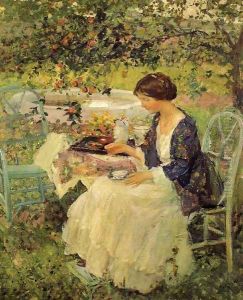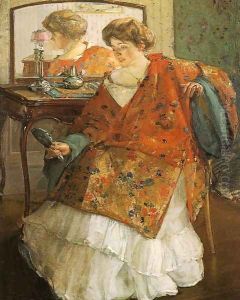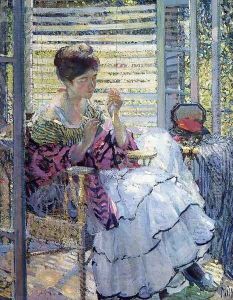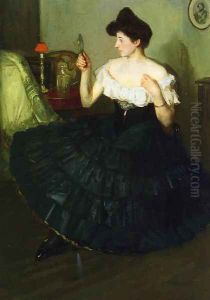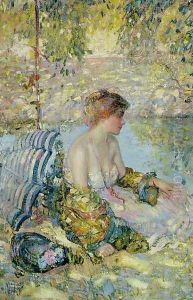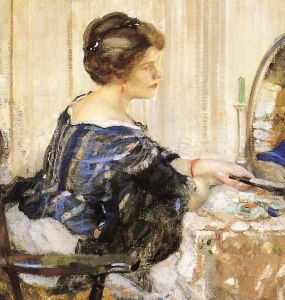Richard Emil Miller Paintings
Richard Emil Miller was an American Impressionist painter known for his works featuring figures, landscapes, and interiors. Born on March 22, 1875, in St. Louis, Missouri, Miller displayed artistic talent from a young age. He studied at the School of Fine Arts at Washington University in St. Louis and later moved to Paris to further his education at the Académie Julian, where he was influenced by French Impressionism.
Miller's early works were well-received, and he became a member of the Giverny Colony of American Impressionists, which included other notable artists such as Frederick Carl Frieseke. He spent many summers in Giverny, where Claude Monet had established himself, and the light and color of the French countryside deeply impacted his style. Miller was particularly recognized for his vibrant use of color and his ability to capture the effects of dappled light.
During his career, Miller exhibited at various prestigious venues, including the Paris Salon, the National Academy of Design in New York, and the Pennsylvania Academy of the Fine Arts. He received numerous awards, such as the silver medal at the 1915 Panama-Pacific International Exposition in San Francisco.
With the onset of World War I, Miller returned to the United States, where he continued to paint and also taught at the Art Students League in New York and later at the Broadmoor Art Academy in Colorado Springs, Colorado. His later works often depicted the leisure activities of the American upper class, with a continued emphasis on the play of light and color.
Miller's prominence waned with the rise of Modernism, and he faced financial difficulties during the Great Depression. Despite this, he continued to work until his death on January 23, 1943, in St. Augustine, Florida. Today, Miller's paintings are recognized for their contribution to American Impressionism and are held in the collections of various museums and galleries across the United States.


